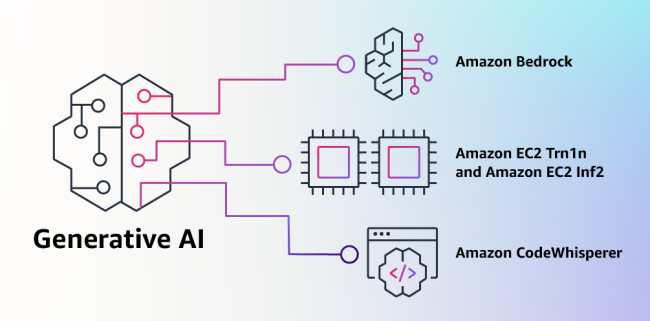Amazon returns to the AI race | WARC | The Feed
The Feed
Read daily effectiveness insights and the latest marketing news, curated by WARC’s editors.
You didn’t return any results. Please clear your filters.

Amazon returns to the AI race
Amazon is joining the generative AI race with a suite of new tools for AWS users and some new use-cases – while pursuing a different strategy into the space.
Why it matters
Recently, the conversation around AI has been dominated by OpenAI, Microsoft, and Google – but now the other cloud-computing titan and machine learning veteran Amazon is offering the groundwork for other partners to build generative AI systems on the “bedrock” of its Amazon Web Services cloud computing system, while providing a way to customise the datasets on which they work.
This is clever for two reasons. First, it helps to de-risk the development of these systems for Amazon, especially on a reputational level. Second, it taps into Amazon’s considerable existing user base of developers for whom adding a generative AI capability to their existing package is likely a lot easier than setting up with a new provider.
Amazon as a Bedrock
The new system, announced in a blog post from the company is called Bedrock, a service “that makes FMs [large sets of image or text based training data] from AI21 Labs, Anthropic, Stability AI, and Amazon accessible via an API.” In addition, customers can build on Amazon’s Titan FMs, two new large language models released at the same time.
“With Bedrock’s serverless experience, customers can easily find the right model for what they’re trying to get done, get started quickly, privately customize FMs with their own data, and easily integrate and deploy them into their applications using the AWS tools and capabilities they are familiar with”, writes Swami Sivasubramanian, VP database, analytics and machine learning at AWS.
AI put to use in-store
Amazon is working with Panera Bread, a chain of bakery-cafés in the US, to use AI-powered voice ordering as well as the e-commerce giant’s biometric scanning system, Retail Brew reports.
While this might seem like a blast from the Alexa-hype past, the system, which runs through Amazon’s newly-updated Food Skills API has seen large improvements thanks to recent advances in conversational AI, which makes the broad variations in natural language (read: people make their orders in all sorts of verbal constructions).
This means a more sophisticated and more flexible system than previous Alexa skills that had resembled phone trees.
Sourced from Amazon, Retail Brew
Email this content
